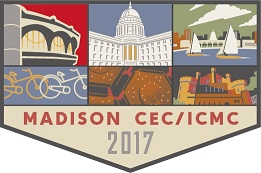Speaker
Description
For Electric Aircrafts of passenger capacity of about 20 and above, there is a clear need to have a high power weight density drive train and energy conversion concept. Conventional concepts (often referred to as “non-cryogenic concepts” are clearly limited in this figure of merit [1] to about 20 kW/kg (for MW size motors). The use of cryogenic machines or superconducting concepts might double this figure.
In addition, high efficiency is a crucial aspect of rotating machineries in propulsion (for ships and aircrafts), and we will elaborate on how HTS technology is breaking some paradigms of conventional electro engineering [2,3,4,5,6].
In addition, changing from big fossil-driven turbines located on wings to electric propulsion motors will offer some additional aerodynamic benefits and might change future aircraft design considerably [1,3].
We will focus on and discuss the state of the art of selected existing HTS machines, the critical design path and components and some functional correlations.
We will highlight foreseeable progress and impact on performance and elaborate on aspects in integration and missing links/ white spots.
Finally we will point out the future prospects and developments which can be expected.
[1] Madavan, N. – “Hybrid-electric and distributed propulsion technologies for large commercial air transports – A NASA perspective”, IEEE energy conversion congress & exposition, Montreal, Canada, Sept.20-24, 2015
[2] Luongo et al. – “Next generation more-electric aircraft: a potential application for HTS superconductors”, IEEE Trans.Appl.Supercond. 19(2009)1055
[3] Masson et al. – “HTS machines as enabling technology for all-electric airborne vehicles”, Superconducting Science and Technology 20(2007)748
[4] de Almeida et al. – “Standards for efficiency of electric motors” IEEE Industry Applications Magazine Jan/Feb.2011
[5] DOE EERE call for next generation rotating machines: enabling technologies, DE-FOA-0001467, 09.Mar.2016
[6] Arndt,T. – “Superconductivity for Electric Aircraft”, talk on workshop on “Regional Electrical Aircraft”, 29th June to 1st July 2015, Airbus Defence and Space, Munich/Unterschleißheim, Airbus Group & European Council of Academies of Applied Sciences, Technologies and Engineering (Euro-CASE)
[7] IEEE roadmap on next generation of large electric machines (sponsored by Grainger CEME, NASA and IEEE) – in preparation
